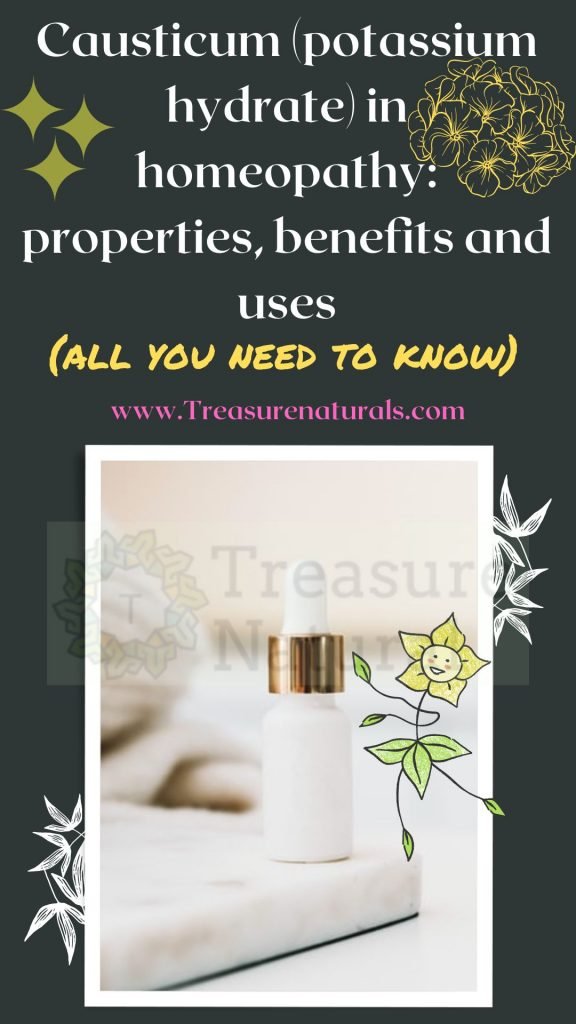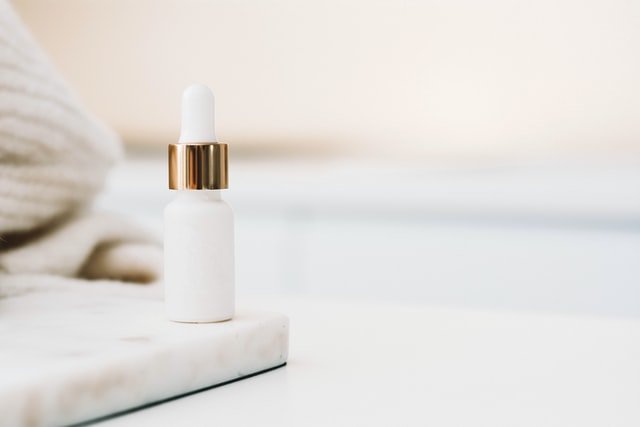
The homeopathic remedy Causticum, or potassium hydrate, is obtained by a very complex process in which a “fusion” of different minerals and chemical elements takes place: slaked lime, potassium bisulfate and water. It was produced and tested in the early nineteenth century by Hahnemann, who noted that this remedy caused an astringent sensation and a spicy taste under the tongue.
Causticum: origin and preparation of the remedy
The basic substance of the remedy, as already mentioned, is lime powder: in a porcelain mortar about 60 g of this powder are mixed with potassium bisulfate and boiling water until a paste is obtained that is then distilled with a specific procedure. The distillate produced contains the concentrated Causticum which, finally, is prepared to the right potency.
Causticum looks like a colorless and clear liquid like water, with an astringent taste. It freezes at low temperatures, has caustic effects and is able to promote putrefactive processes in animal tissues.
Causticum : homeopathic remedy
Causticum is a homeopathic remedy used especially for paralysis or weakness of the nerves and muscles of the bladder, larynx, vocal cords, upper eyelids or right side of the face. Cases of bladder paralysis cause enuresis especially if the patient has cold. The Causticum woman suffers from urine leakage when sneezing, coughing, walking or blowing her nose.
Causticum performs its action mainly on:
- nervous system;
- muscles;
- fibrous tissues;
- skin;
- mucous membranes.
And it is used especially in the following cases:
- insufficiency of the bladder sphincter;
- joint deformations accompanied by paralytic hypoesthesia of the limbs and joint stiffness;
- cavernous cough;
- pains from intense congestive inflammation of the mucous membranes;
- stiffness of the cervical and lumbar muscles;
- nocturnal enuresis;
- heartburn during pregnancy;
- laryngitis;
- rheumatism;
- stress incontinence.
The constitutional type Causticum

The constitutional type Causticum is usually described as below. It has dark eyes and hair, olive complexion.
These are mostly weak and rigorous people who suffer the consequences of pain and participate in the suffering of others. They are cold subjects who may suffer from warts around the nails, eyelids, face and nose.
They are also wary of others, they have choleric impulses but also great impulses of affection. They are also characterized by inaccurate anxiety, also called “fluctuating anxiety”, and often suffer from panic attacks.
Here are their clinical features:
Mental symptoms:
- depression associated with irritability;
- mental weakness;
- anxiety and agitation;
- impaired sleep (children with fear of the dark);
- anguish for impending misfortune;
- hypersensitivity to the troubles of others;
- suspicious, critical, to the point of wickedness.
General symptoms:
- asthenia in 3 stages (weakness, paresis, paralysis);
- feeling of peeling;
- burning sensation;
- feeling of paroxysmal lacerating pains.
Local symptoms:
- respiratory system: dry cough with loss of urine, hypophony, diphtheria paralysis;
- neuro-muscular apparatus: irritation, spasms, neurological problems (post-zoster), chorea, dizziness, ataxia-tabe, paralysis, after-effect paresis (from stroke), multiple sclerosis, paralysis motor nerves;
- genitourinary system: incontinence (children and the elderly), bladder tenesmus, prostatic hypertrophy, dysmenorrhea in women and impotence in men;
- eye: eyelid ptosis, strabismus, diplopia, asthenopia, warts upper eyelid;
- ear: considerable accumulation of earwax, tinnitus, hearing loss / deafness;
- nose: accumulation of crusts;
- locomotor system: rheumatism, tendon retractions, sclerosis, temporary and permanent contractures;
- digestive system: heartburn, thirst, meteorism, burning sensation.
The symptoms of this subject are aggravated by the cold and dry wind, in the evening and after an effort. Instead, they improve with cold drinks, with heat and washing.






